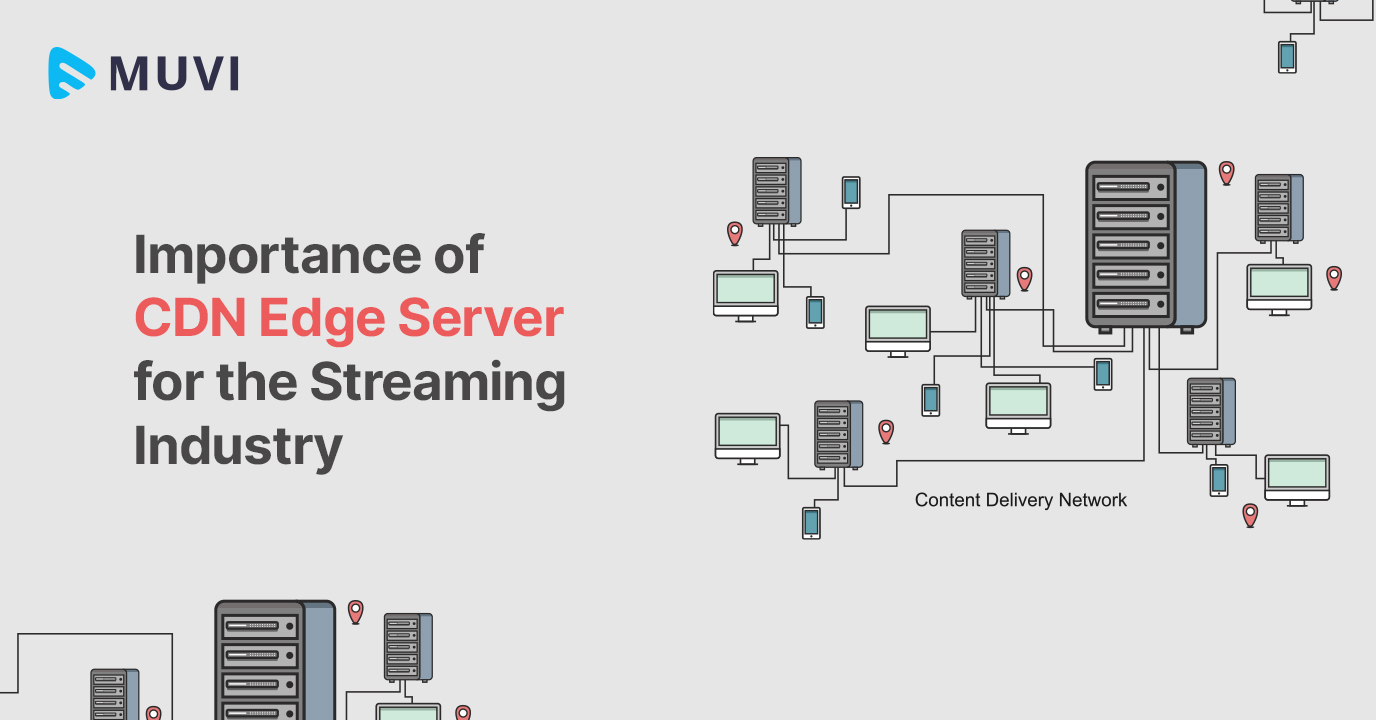Written by: Amita Kumari
Amita is a content writer with Muvi marketing team. She has over 5+ years of experience in content creation and development. Passionate by heart, she likes to cook, write, sing and do yoga to pass time.
With the increasing demand for content delivery to a global customer, businesses were facing issues with streaming quality and delivery time. Not only this, there has been a constant demand for improving streaming security as the rise of content … Continue reading

With the increasing demand for content delivery to a global customer, businesses were facing issues with streaming quality and delivery time. Not only this, there has been a constant demand for improving streaming security as the rise of content piracy.
To improve user experience and provide end-to-end streaming security, businesses have revolutionized the content distribution system by introducing built-in CDN, which has caused the development of effective CDN edge servers.
In this blog, we are going to discuss the importance of CDN edge servers for the streaming industry.
Also read- A Quick Overview of How OTT Platforms have Diversified their Core Offerings
Edge servers store the cached version of streaming data to make the streaming content delivery light and fast.
Here is what a typical edge network process workflow looks like:
1- When a user clicks on the play button on his device, the content provider’s website CDN receives the streaming request.
2- Anycast DNS is used to determine which edge server is present nearer to the users’ device, and according to that CDN routes the streaming request to that edge server.
3- In cases where the cached content for the same video is available in the edge server, it directly sends the response to the user device, which delivers a zero-buffer playtime to the user.
4- In cases where the edge server does not have the cached content for the same video, it sends requests to the CDN, then proxies the response to the user, and saves the cached content for future reference.
Low latency streaming
Whenever any streaming request comes, the content is fetched from the edge server present closest to the user device. This causes low streaming latency and improves video quality.
Improves server security
In edge server content streaming, users’ requests are processed from cached data, which keeps the original IP address undiscovered. It improves data integrity and content piracy from DDoS attacks.
Also read- How is OTT Impacting Telecom Service Providers
Avails 24*7 uptime
In the scenarios where the origin server goes down, the data transmission happens through the edge network, the user gets 24*7 uptime with the highest quality streaming.
Fill in bandwidth requirement
Edge servers bridge the need for data exchange between different networks. Hence leads to low bandwidth usage and results in minimum operational cost.
CDNs are the backbone of streaming services for multiple reasons. Businesses having a global presence, have the requirement to deliver content worldwide. With effective edge servers streaming, OTT organizations have been serving the best quality streaming content 24*7 uninterruptedly.
Global Enterprise-Grade OTT platform development service providers like Muvi are offering users multi-CDN along with end-to-end CMS management, analytics & reports, built-in DRM, cloud hosting, video player, video cdn hosting, multiple monetization models, and a lot more.
Muvi One, Muvi’s high-end customer-centric streaming platform development product, simultaneously serves the business requirements and improves brand loyalty and customer conversion.
To know more about Muvi One, make sure to sign up for a 14-day free trial of Muvi One and explore its multitude of functionalities.
Written by: Amita Kumari
Amita is a content writer with Muvi marketing team. She has over 5+ years of experience in content creation and development. Passionate by heart, she likes to cook, write, sing and do yoga to pass time.
Add your comment